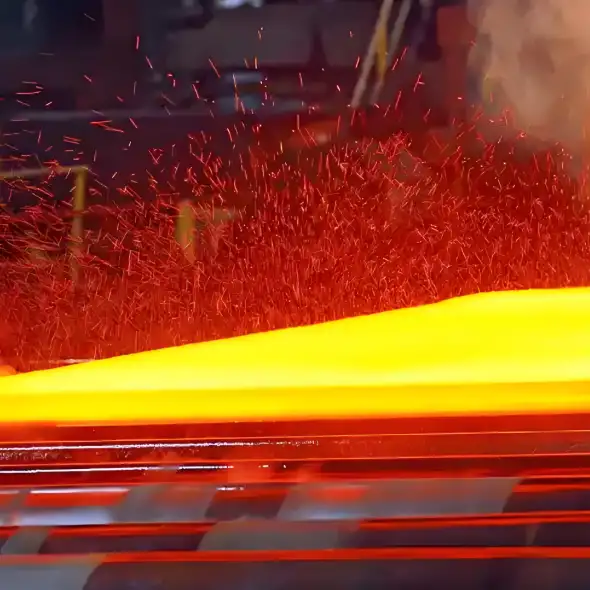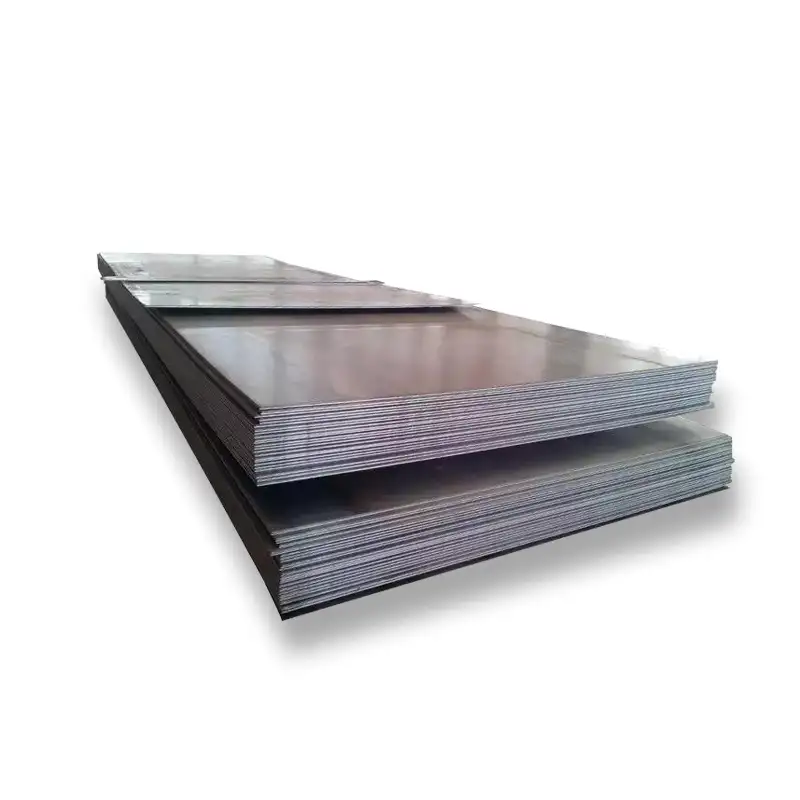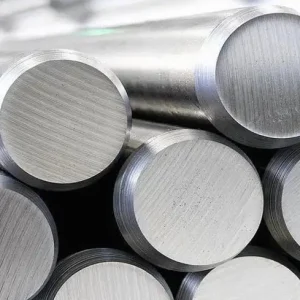ASTM A656 (high-strength, hot-rolled HSLA plates) and EN S355J2 (EN 10025-2) describe materials that are functionally equivalent for many structural applications: both deliver high yield strength, good weldability and low-temperature toughness for plates used in construction, cranes, heavy machinery and transportation equipment. For buyers who need reliable, economic structural plate with rapid factory dispatch from China, MWAlloys supplies A656 / S355J2 plates at direct factory pricing, with ready stock for common thicknesses and fast lead times.
What is ASTM A656 / S355J2 carbon steel plate?
Short technical description: ASTM A656 is an ASTM International specification for hot-rolled, high-strength low-alloy (HSLA) structural steel plate produced with improved formability. The A656 family is split into strength grades (Grade 50, 60, 70, 80, 100) based on minimum yield strength. S355J2 (EN 10025-2) is a European structural steel grade having a minimum yield strength roughly 355 MPa (hence “S355”) and specified impact toughness at −20°C (the “J2” designation). In practice, many A656 grades map closely or overlap with S355 variants, which is why suppliers commonly label plates “A656 / S355J2” when they meet both sets of requirements.
Why buyers often equate ASTM A656 with EN S355J2
-
Functional equivalence: Both standards aim for high strength, weldability and improved notch toughness compared with ordinary mild steels. This makes them interchangeable in many structural projects after buyer/supplier agreement on exact chemistry, toughness and testing.
-
Market practice: Mill certifications often show both ASTM and EN references; traders, fabricators and procurement teams accept mapped equivalents once mechanical tests and impact certificates are agreed.
Chemical composition
Note: chemistry limits below are representative for S355J2 / A656-equivalent production. Always confirm the mill test report (MTR) for each lot.
| Element | Typical max (wt.%) — S355J2 / A656 equivalent |
|---|---|
| Carbon (C) | 0.20 – 0.22 |
| Silicon (Si) | 0.40 – 0.55 |
| Manganese (Mn) | 1.40 – 1.60 |
| Phosphorus (P) | 0.025 – 0.035 |
| Sulfur (S) | 0.025 – 0.035 |
| Copper (Cu) | ≤ 0.55 (often optional) |
| Nitrogen (N) | controlled to support impact toughness |
| Carbon Equivalent (CEV) | typical max ~0.41–0.47 (depends on supplier) |
Source basis: EN 10025-2 tables and mill datasheets (thyssenkrupp / industry datasheets). Always confirm exact limits with the supplier and MTR.

Mechanical properties
Values depend on nominal thickness and heat treatment (e.g., +N normalized). The table below lists typical guaranteed minima for S355J2 / A656-equivalent plates.
| Property | Typical value (S355J2 / A656-equivalent) |
|---|---|
| Minimum yield strength (Rp0.2) | 355 MPa (for thicknesses up to certain limits; reduces slightly for thicker sections) |
| Tensile strength (Rm) | ~470 – 630 MPa (depending on thickness) |
| Elongation (A%) | 20% (varies with specimen length and thickness) |
| Impact energy (Charpy V-notch) | 27 J at −20°C (J2 grade) |
| Hardness (HB) | ~150 – 190 (typical Brinell range) |
Notes: minimum yields drop modestly with increasing plate thickness (standard tables in EN 10025-2). Exact guarantees must be read from the order clause and mill certificate.

A656 / S355J2 plate specifications and delivery options
Typical purchaser choices you must specify in purchase order:
-
Grade / strength: (e.g., A656 Grade 50 / 60 / 70 / 80) or S355J2(+N) (normalized).
-
Thickness range: mills commonly supply from ~3–300 mm; typical stock ranges are 6–50 mm for standard inventories.
-
Widths & lengths: widths up to ~3.5–4.0 m; lengths to customer requirement (often up to 12 m or longer with cutting).
-
Heat treatment / delivery condition: as-rolled, normalized (+N) or normalized and tempered (if requested). Specify impact test temp and specimen location if needed.
-
Surface finish & marking: mill-scale, shot blasted, painted or primed per order.
-
Testing & documentation: MTR (EN 10204 3.1 / 3.2 options), tensile test, Charpy V-notch results, PMI/chemical analysis and any NDT requested (UT/RT).
Physical properties and hardness
-
Density: ~7.85–7.87 g/cm³ (7.85 commonly used for steel weight calculations).
-
Thermal and electrical: standard carbon steel behaviour; thermal conductivity and expansion as with typical structural steels.
-
Hardness: typical Brinell hardness falls in the 150–190 HB range for S355J2 plates; hardness correlates with processing and thickness.
Where A656 / S355J2 plates are used
-
Building and civil engineering: structural beams, heavy base plates, bridge components.
-
Heavy equipment: crane booms, excavator structures, truck frames and trailers.
-
Manufacturing & transport: rail cars, offshore platforms (when combined with appropriate surface protection), energy and wind foundations (where thickness/impact needs match).
-
General fabrication: large welded assemblies where good weldability and higher strength reduce weight.
Practical examples: a crane boom built from A656 Grade 60 plate reduces section size versus mild steel while maintaining fatigue and toughness performance.

Plate sizes and weight
Weight formula (metric):Weight (kg) = length (m) × width (m) × thickness (mm) × 7.85 (kg/dm³) / 1000
(Equivalent: 1 m² of 1 mm thick steel ≈ 7.85 kg.)
Quick reference — weight per m²:
| Thickness (mm) | Weight (kg/m²) |
|---|---|
| 3 | 23.55 |
| 6 | 47.10 |
| 10 | 78.50 |
| 20 | 157.00 |
| 25 | 196.25 |
| 50 | 392.50 |
Practical note: When ordering, specify whether cut-to-size tolerances and edging are required; mill plate nett dimensions vary with saw kerf.
Fabrication notes — welding, cutting, forming, machining
-
Welding: good weldability with standard filler metals for mild/HSLA steels. Preheat and controlled heat input recommendations depend on thickness and carbon equivalent (CEV); keep CEV in agreement with purchaser requirements.
-
Cutting: plasma, oxy-fuel or laser per thickness; allow for heat effected zone when critical toughness is required.
-
Forming: ductility is typically adequate for common cold forming operations for thinner plates (check formability limits for thicker plates).
-
Machining: behaves like common carbon steels; hardness and inclusions influence cutting speed.
-
Special processes: for welding to dissimilar steels or where stress corrosion is a concern, specify post-weld heat treatment or specific filler chemistry.
Corrosion protection, coatings and long-term durability
-
General guidance: A656 / S355J2 are plain carbon/low-alloy steels — they require coating in corrosive environments. Common surface protection: hot-dip galvanizing, solvent-borne primers, epoxy coatings, metallizing.
-
Offshore or aggressive environments: choose appropriate structural grades with corrosion allowance, coated systems, or corrosion-resistant alloys. For marine or offshore service, discuss specific coating systems and inspection cycles with coating suppliers.
Quality control, certificates and inspection
-
Mill Test Report (MTR): ask for EN 10204 3.1 certificate (independent inspector) or 3.2 where required. MTR should list chemical analysis, mechanical tests, impact tests and supplement records.
-
Third-party approvals: if project requires DNV/ABS/LR/GL/TÜV etc. approvals, confirm mill can supply plates with those class notations and witness testing.
-
Non-destructive testing: UT/RT, hardness mapping and surface checks commonly requested by large fabricators.
2025 price snapshot (USA / Europe / China)
Important: steel prices fluctuate rapidly with feedstock, tariffs, freight and regional demand. The numbers below are market snapshot ranges (2025) gathered from open industry reports and market feeds; use them for ballpark budgeting only and confirm quotes with suppliers.
| Region | Indicative price range (USD / metric tonne) for S355 / A656-equivalent plate (2025) | Notes / sources |
|---|---|---|
| United States | ~$800 – $1,100 / t (hot-rolled structural plate spot base varies by month) | U.S. HRC and plate pricing rose in early–mid 2025 due to tariffs and domestic demand; see industry spot indices. |
| Europe | ~$650 – $900 / t (CPT/EU delivered S355 plate offers vary by mill/origin) | European physical market indices and offers varied by region in 2025. |
| China | ~$600 – $820 / t (domestic plate S355 offers; spot quotes for thin/thicker items vary) | China domestic plate tends to trade lower but varies by specification and thickness; Chinese market monitors show sub-$700/t for some plate items in 2025. |
How to interpret these numbers: Prices above are for raw plate material only (not coated, cut, or shipped). Large orders, quality extras (3.1/3.2 certificates), special heat treatment or class approvals will add cost. Freight, insurance and duties can push landed costs substantially. Always get a firm mill or trader quotation and confirm lead time.
How to buy and why MWAlloys is a good option
Checklist for procurement:
-
Specify exact standard(s) and grade (e.g., “ASTM A656 Grade 60 / EN 10025-2 S355J2+N”), thickness, length, width, surface and test certificates required.
-
Request sample MTR and Charpy sample diagram before committing.
-
Ask for lead time, production mill name, and stock availability.
-
Clarify packaging, inland transport, and who pays for QC witness testing.
Why choose MWAlloys (summary for project buyers):
-
Factory pricing: MWAlloys offers direct factory pricing (100% factory-to-buyer flow) — eliminating middleman markups for common sizes and grades.
-
Stock & speed: MWAlloys keeps inventory of popular A656/S355J2 thicknesses and delivers fast for typical client orders (cut-to-size service available).
-
Documentation: full MTRs, third-party inspection on request, and export packaging compliant with international shipping.
-
Support: technical assistance from our metallurgy team for welding, forming and material selection.
FAQs
-
Is S355J2 the same as A656?
Not identical in standard wording, but they are often functionally equivalent for structural plate. Buyers must confirm chemistry, toughness and test certificates for interchangeability. -
What does the “J2” mean in S355J2?
Charpy V-notch impact energy: minimum 27 J at −20°C, indicating cold-temperature toughness. -
Will S355J2 work for welded crane booms?
Yes, if chosen thickness, weld procedure and post-weld practice meet project fatigue and toughness requirements. -
Can I galvanize S355J2 / A656 plates?
Yes, typical surface preps and controlled silicon levels are used; request controlled Si in the order if hot-dip galvanizing is planned. -
How is plate weight calculated?
1 m² × 1 mm thickness ≈ 7.85 kg. Use the formula in Section 8 for bespoke sizes. -
Are A656 plates available in normalized condition?
Yes — +N (normalized) is a common delivery option to improve toughness and homogenize properties. -
Which certificates come with mill plates?
Commonly EN 10204 2.2 (manufacturer’s test certificate) or 3.1/3.2 (independent test report). Specify 3.1 or 3.2 if required. -
Do A656 / S355J2 need PWHT (post-weld heat treatment)?
Usually not for moderate thicknesses if welding procedures control heat input; however PWHT may be needed for specific service or thicker sections—consult welding engineer. -
What about equivalent Chinese grades?
Chinese Q345D/Q345E family often maps to S355 in performance; always verify chemistry and toughness. -
How quickly can MWAlloys deliver?
Common stocked thicknesses can be shipped within days to a few weeks depending on destination and order size; custom items follow mill production schedules — request a firm lead time in the quote.
Authoritative references
- ASTM A656 / A656M-18 — Standard Specification for Hot-Rolled Structural Steel, High-Strength Low-Alloy Plate (ASTM International)
- BS EN 10025-2:2019 — Hot-rolled products of structural steels (British Standards / EN text)
- Guidance Note GN 3.01 — Steel Construction Institute (toughness and material selection guidance)





